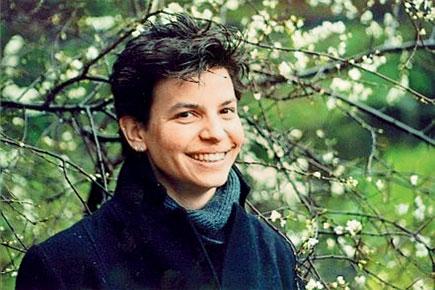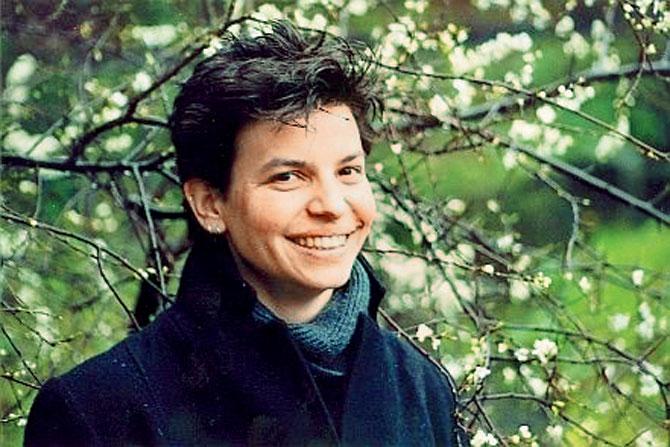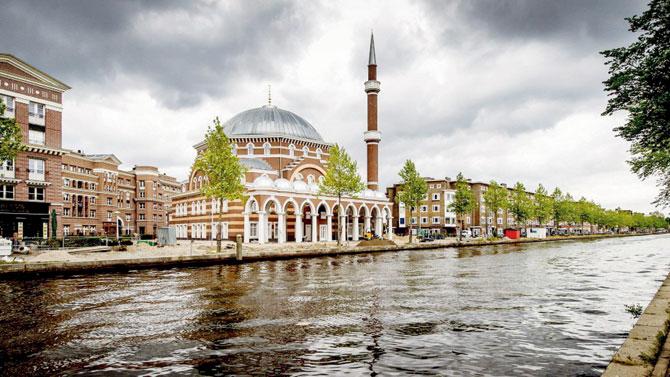At a session on Tuesday evening, a visiting professor from The Netherlands uses a mosque in Amsterdam to explain how a religious building can be the centre of politics, debate and dialogue


Dr Markha Valenta
How do we read the politics of religious buildings in cities? Taking off from this simple question, Dr Markha Valenta will look at the tensions and difficulties of building a mosque in Amsterdam. This becomes a way of looking closely into the most local of urban political and economic relations, and of opening the discussion to larger issues. The Amsterdam-based expert in global politics hopes to explore the dynamic interplay between bodies and buildings; religion and profits and politics. Excerpts from an interview.
ADVERTISEMENT
How did the idea of using a mosque in Amsterdam emerge as the epicentre for your upcoming talk on the politics of governance?
For many West European countries, the question of what place Muslim immigrants can and should have in their societies is a complicated and sensitive one. It confronts Europe with the fact that it is changing in ways that no one expected, neither Europeans nor the immigrants themselves. This becomes especially clear around issues that concern powerful symbolic objects in public spaces, such as religious buildings. Often cities will try to resolve conflicts that arise in traditional ways, only to find that new developments like social media, new political styles and even shifting geopolitics make this difficult. So considering the tensions created by the construction of mosques and the ways in which these are resolved can tell us much about how our cities, our communities and our democracies are changing today. I say “us” because these are challenges that extend far beyond just Amsterdam or Europe. We can find them across the world, and this is what intrigues me.
Why do religious buildings in world cities invite interest from different quarters?
Religious buildings, like iconic buildings more generally, are one of the important places in which we give concrete, material shape to what is most important to us as communities and societies but often least substantial: our desires and aspirations; our sense of moral order in the universe; our relation to the divine; and our deepest loyalties. At the same time, people can disagree strongly: about what those aspirations and commitments should be; what the nature of the moral order and the divine are; and how to go about giving that the best shape in our lives. Hence, religious buildings are deeply existential and deeply political.
In world cities, people from across the world live together under conditions of great social and economic change, and the great inequalities that accompany this. Here the tensions related to religious buildings offer us one important way of tracing and examining these contemporary changes. At the same time, they allow us to relate the different classic components of a city to each other – the market, the agora and the temple – in a fashion that few other topics do.
Do Mumbai’s religious sights and structures fall in your radar as ongoing research in the area?
My fantasy would be to spend a year exploring Mumbai's countless beautiful and fascinating religious structures from classic ones like Babulnath Temple and Haji Ali Dargah to ones that have changed much in recent decades like Siddhivinayak or the new memorial to Ambedkar that is going to be built, to those of much smaller communities, like the synagogues of the Baghdadi Jews or Siddi shrines. What also intrigues me (though sometimes people disagree strongly about this), is the way in which tiny roadside shrines can turn into larger, permanent structures fairly quickly. That touches on how dynamic the city is and how groups find ways to create a place for themselves and their god(s). I would also find fascinating to learn more about how the religious structures of migrants compared to those they have left behind. How does the city transform them? And how do they in turn transform the religious fabric of the city?
How much of a challenge is it for world cities to be secular in a rapidly changing, intolerant world?
When a world is changing as quickly as ours, in ways that many did not expect, often with great violence, we are faced with the choice of whether to respond with fear or hope. Fear produces intolerance; hope may enable tolerance. It is important to understand that we are trying to achieve something that has not existed before: the creation of societies in which we can live as equals in diversity. This is a global challenge.
For many, true equality is unfamiliar and uncomfortable while for others, it means loss of power and status. So we must find ways to make this familiar and comfortable and at the same time inevitable and necessary. We do this through the stories that we tell about ourselves; through the organizations that we build to enable this; through systems of legal accountability for the violation of these commitments; through an economic system subject to society rather than its master; and through the commitment of political will and our societies’ deep creativity to this great project. It will take more than one generation; just as the fight for independence and for democracy did. World cities are the preeminent laboratories for this. This is why they are loved and feared. Each city and each society will find different solutions; even as these create a global tapestry that must agree that it will live without violence, while striving for equality. We have not yet agreed to this; many do not believe it is possible. I do.
Westermoskee in Amsterdam bears a design modelled similar to the Hagia Sophia in Istanbul
Oo Tuesday, 4.30 pm onwards
At The Claude Batley Gallery, Sir JJ College of Architecture, 78/3 D N Road, Opposite CST.
Entry Free seating
 Subscribe today by clicking the link and stay updated with the latest news!" Click here!
Subscribe today by clicking the link and stay updated with the latest news!" Click here!






